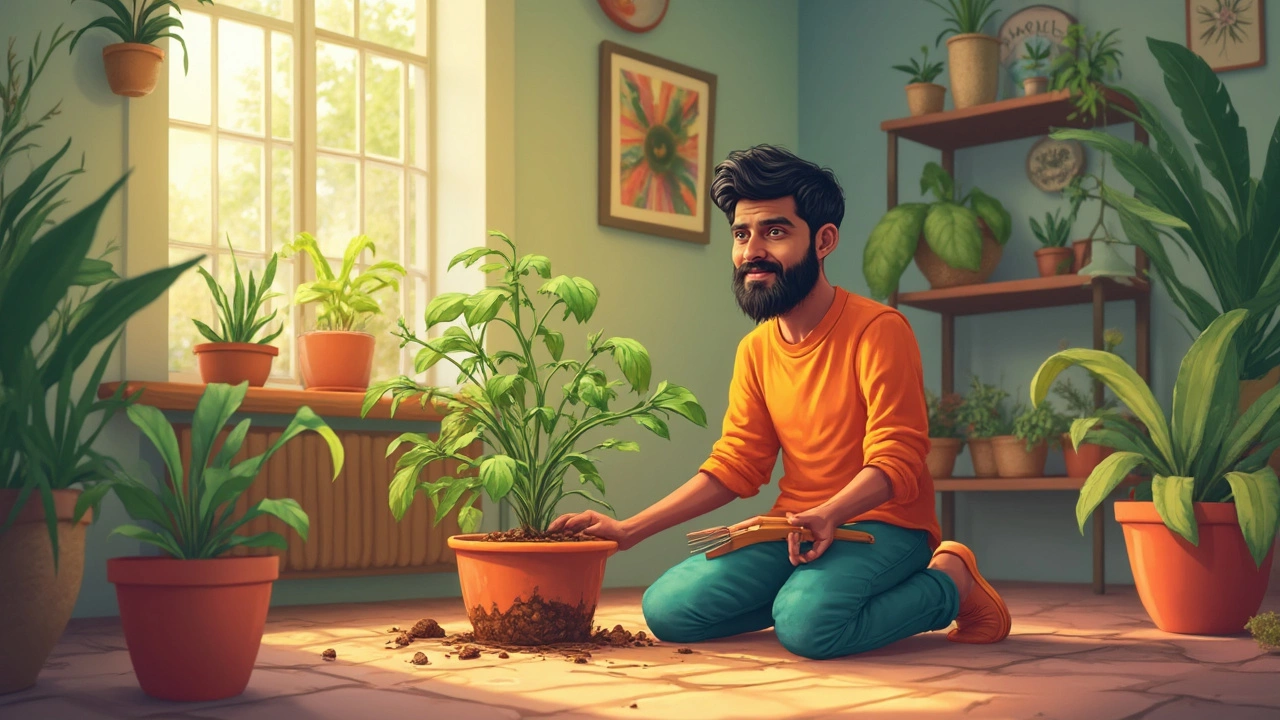Root rot is the bane of indoor plant enthusiasts, threatening the lush greenery that thrives within our homes. This article dives into the practical steps to identify, address, and prevent root rot. From recognizing the early signs to mastering the art of repotting, we cover everything you need. What's more, you'll get insider tips on nurturing a rejuvenated plant back to health. Keep your indoor oasis thriving with these handy plant-care strategies.
Root Rot: What It Is, How It Kills Plants, and How to Fix It
When your plant starts dropping leaves, turning yellow, or just looks like it’s giving up—root rot, a fungal disease caused by waterlogged soil that attacks plant roots and prevents nutrient uptake. It’s not a one-time mistake. It’s the result of repeated overwatering, poor drainage, or using the wrong kind of soil. And once it takes hold, your plant won’t bounce back without action. This isn’t just a houseplant problem. It’s one of the top reasons Indian gardeners lose their vegetables, herbs, and even ornamental plants during monsoon season or when they water too often out of love.
Overwatering, the most common cause of root rot, happens when soil stays wet for days instead of drying out between waterings. Your plant’s roots need air as much as water. In dense clay soil, or when pots lack drainage holes, water pools around the roots. Fungi like Pythium and Phytophthora thrive there, turning healthy white roots into brown, mushy strings. You can’t fix this by adding more fertilizer or spraying leaves. You need to fix the soil and the watering habit.
Soil drainage, how quickly water moves through soil, is the silent hero or villain in plant health. Many people use regular garden soil in pots—big mistake. It compacts, holds water, and suffocates roots. The fix? Mix in perlite, coco coir, or coarse sand. Even adding a layer of gravel at the bottom of a pot helps. And if you’re growing on a balcony or terrace, make sure your containers have holes. No exceptions.
Root rot doesn’t show up overnight. It creeps in. A plant that seems fine one week, then wilts the next, is often already beyond saving. But if you catch it early—when the leaves just start to yellow and the soil smells sour—you can still rescue it. Remove the plant, rinse the roots under running water, cut away every soft or black part with clean scissors, then repot in fresh, airy soil. Don’t water for a week after. Let the roots heal.
You’ll find plenty of advice online about using cinnamon or hydrogen peroxide to treat root rot. They help a little, but they’re not magic. The real fix is simple: stop drowning your plants. Let the soil dry. Improve airflow. Use the right pot. These aren’t fancy tricks—they’re basics. And the posts below show you exactly how to do them right, whether you’re growing basil on your balcony, tomatoes in a tub, or jasmine in the ground. You’ll learn how to spot root rot before it kills your plant, how to choose soil that won’t trap water, and how to fix overwatered houseplants without losing them. No guesswork. Just clear, practical steps that work in Indian homes and gardens.
